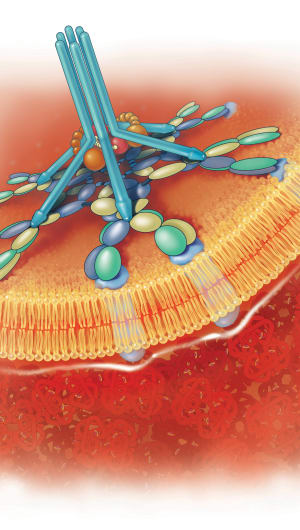Abstract
Case Study
ES is a 41-year-old transgender male who presented to medical oncology as a referral from surgical oncology for T2N0M0 right breast cancer. At that time, he was receiving weekly testosterone injections intramuscularly at 0.25 mg, and had been on this regimen for 7 months. He was planning bilateral mastectomies in the spring. That winter, he palpated a mass in his right breast, and imaging revealed a 2.5-cm hypoechoic mass. A biopsy of the mass revealed invasive ductal carcinoma, with a nuclear grade of 3. His tumor was estrogen receptor positive (H-score of 180), progesterone receptor positive (H-score of 90), androgen receptor positive (H-score of 220), and HER-2/neu positive by FISH, with a Ki-67 of 90%.
The clinical experience of ES illustrates challenges common to the sexual and gender minority population. ES presented to the clinic with a female friend. At that time, his name and gender in the electronic medical record (EMR) matched his driver’s license, and not his preferred name or gender. Consequently, when he was called from the waiting room, he was called by his former name.
The staff had not been notified of the appropriate name or pronoun to use prior to ES’s arrival, and consequently was associating ES with a female gender, as indicated in the EMR. When the question about menstrual status was addressed, he stated that he had not had a period in 7 months since beginning testosterone treatment. The medical assistant questioned the use of testosterone, and ES had to explain his gender reassignment journey.
By the time the physician assistant (PA) entered the room to perform the first part of the shared visit, ES was visibly upset, expressing anger with nonverbal cues. During the conversation, the PA did not acknowledge or establish the relationship of ES’s female friend. The PA did not address the issue of gender identity, the use of testosterone, or plans for reassignment surgery. The physician also deferred discussion of gender reassignment during his portion of the visit and, without asking about gender reassignment, recommended cessation of testosterone therapy. Neoadjuvant docetaxel/cyclophosphamide/trastuzumab/pertuzumab was ordered, and ES agreed to treatment, but declined following the suggestion to stop testosterone.
At each treatment visit, ES had to check in at the desk with his former name, resulting in confusion from the staff. With each lab draw, his name and birthdate were confirmed using the former name. With every administration of chemotherapy, double-nurse verification at the chairside was performed by reading his arm band and comparing it to the drug label. For each visit, ES had to use his old name six times. With new staff assigned to him each week, he felt pressured to explain his gender identity to several new people at each visit. At one particular visit, a patient’s family in the next cubicle overheard this conversation, and ES overheard them discussing and laughing about his gender identity. ES dreaded his chemotherapy appointments not just due to the expected toxicity, but also because of the insensitivity toward his chosen gender.
ES tolerated chemotherapy and proceeded to surgery. He underwent bilateral mastectomies by the surgical oncologist, who had discussed his gender reassignment with him and had referred him to plastic surgery for co-management of the surgical intervention. The plastic surgery team planned for reconstruction to include skin and soft-tissue rearrangement to give an incision line along the lower border of the pectoralis for better male cosmetic outcomes. Together, they performed bilateral mastectomies with right sentinel lymph node biopsy, horizontal mastopexy, and nipple-areolar grafting. Ultimately, the pathology revealed a complete response, and ES was pleased with the cosmetic outcome.
ES was then started on tamoxifen. Again it was suggested that he discontinue testosterone therapy. He determined that he was more comfortable with an increased risk of recurrence than he was with feminine physical characteristics and chose to continue testosterone. After 6 weeks of tamoxifen, his menses resumed. He elected to discontinue tamoxifen. He had no more vaginal bleeding after that episode. He was referred for bilateral salpingo-oopherectomy (BSO), with the intent to treat with an aromatase inhibitor. He proceeded with BSO and opted against the aromatase inhibitor, citing concerns about unknown interactions with gender-affirming medication. He completed 1 year of trastuzumab (Herceptin) and continued surveillance visits.







